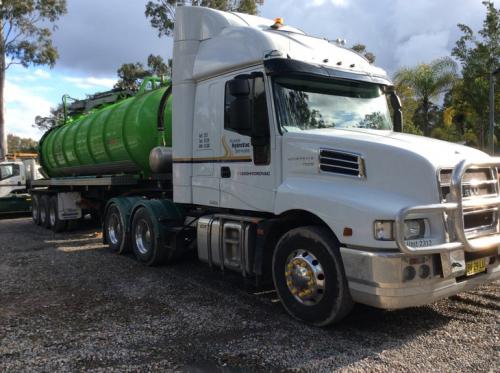Why is Processing of Gross Pollutant Traps Necessary for Waste Management?

With
rising urbanisation worldwide, the public's lifestyle and many countries'
economic growth have undoubtedly improved. However, as we all know, everything
has advantages and disadvantages, and urbanisation is no exception. It has
resulted in a serious environmental challenge, popularly known as grease trap
waste. In most of our cities and towns, what has been observed is that
pollutants such as oil, fats, grease, and litter occupy large spaces and end up
in natural bodies of water. To tackle these challenges, countries all over the
world have come up with a solution known as gross pollutant traps. This article
will explore the meaning, structure, types, and functions of gross pollutant
traps.
What
is a Gross Pollutant Trap?
Gross
pollutant traps are carefully designed structures that are engineered in such a
way that they can easily capture largely invisible pollutants from stormwater
runoff. Pollutants may include fats, oils, grease, chemicals, leaves, and
sediments, among others.
The
Simple Structure of a Gross Pollutant Trap
1.
Inlet Pipe
The
inlet pipe is the structure from which the waste materials enter the trap. The
inlet structure is designed to slow down the flow of the waste so that
pollutants can settle easily.
2. Sub-Chambers
There
are two important sub-chambers present inside a gross pollutant trap. One is
known as a sediment chamber. Stormwater moves inside this chamber with a lower
flow velocity. This reduction in velocity helps to settle the large particles
of waste and sediment. Many types of traps are powered with screens to improve
this process. The second is known as a storage trap. Present inside the
pollutant trap, a storage tank is used for temporarily storing plastic bottles
and other solid waste. This is particularly done for easy and proper disposal.
3. Outlet
Pipe
As
the name suggests, in an outlet pipe, the treated stormwater is released into
the stormwater network.
Types
of gross pollutant traps
1.
Waste Racks
Waste
racks are generally lower in terms of cost and consist of racks with bars or
screens that catch large debris. It is used in areas that have high levels of
litter.
2. Hydro
Dynamic Separators
These
are special types of gross pollutant traps that are empowered with some of the
advanced technologies that use a combination of gravity and vortex to separate
pollutants and sediments. Finer particles and oil are removed using this
technology.
3. Screen
Chambers
Some
of the popularly known gross pollutant traps and screen chambers are designed
with vertical or horizontal screens to capture debris and sediments.
4. Baffle
Boxes
A
relatively new concept, in a baffle box, a series of inclined plates and
screens are utilised to separate sediments and pollutants.
Advantages
1. Water Purification
Gross
pollutant traps have a direct impact on reducing pollution levels of water. It
is indeed true that waste from industries and households, especially liquid
waste is generally dumped into the natural bodies of water. However, with the
proper processing of gross pollutant traps, we will be able to solve the issues
related to the dumping of waste on water bodies. This will not just help in
improving the quality of water but will also protect aquatic and marine animals
from fatalities.
2. Saves Costs
It is not a myth that liquid waste might mingle with public utility systems in towns and villages and disrupt their functioning. Regular processing of gross pollutant traps may avoid huge and unnecessary repair costs of public utilities to some extent.
3. Public Health
Till
now the types of waste that have been mentioned in this article such as oils,
chemicals, and fats are harmful to human health. They may cause rancid odours,
respiratory issues, and allergies to workers and people living around them.
However, if one goes for proper cleaning of gross
pollutant traps, then it will mitigate all these harmful effects and lead
towards a better quality of life.
If
you are looking for gross pollutant trap cleaning in Australia, you can contact
Aussie Hydro-Vac Services. The company’s extensive industry knowledge and
expertise ensure all units are cleaned as per standard recommendations, using
the highest quality and leading techniques.
Till
now, the company has provided services to all types of gross pollutant traps in
a variety of settings, including mills, tunnels, airports, restaurants,
shopping malls, and through council contracts.
All
services and disposal methods comply with environmental principles, legislative
requirements, and safety standards.
Aussie
Hydro-Vac Services’ specialised professionals have capabilities and expertise
in cable and pipe location, CCTV drainage survey, and non-destructive digging. It
is also highly experienced in industrial cleaning service such as hydro-vacuum
excavation. The company’s experience in industrial
cleaning service and shutdowns extends from marine applications on freight
ships to land-based tanks and mining facilities.
Post Your Ad Here
Comments